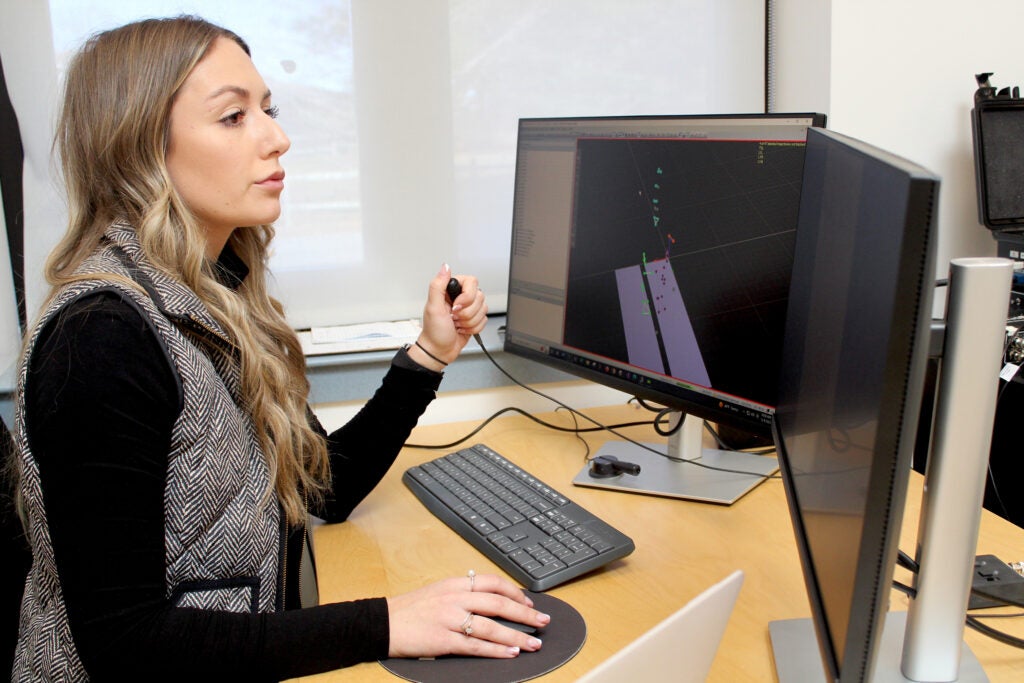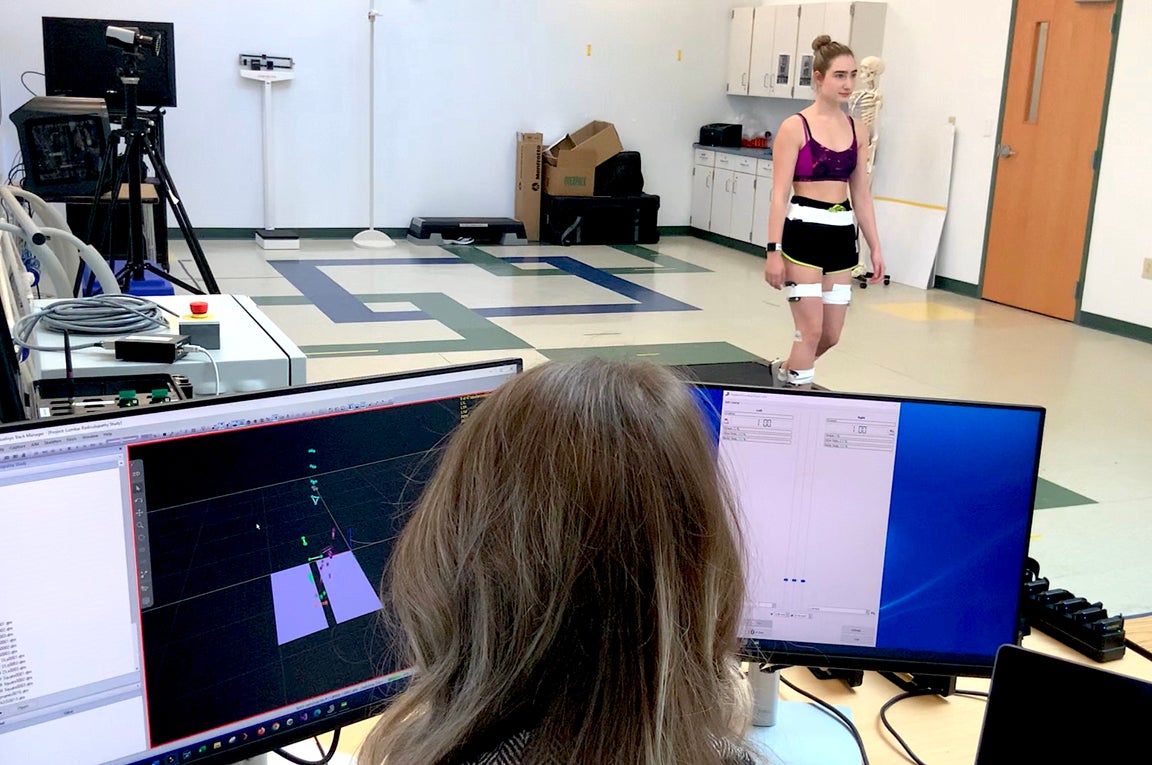KINGSTON, R.I. — Dec. 19, 2022 — Back pain is the most common cause of muscular skeletal disability in the United States and across the world, affecting hundreds of millions of people every year. It is estimated that 50-75% of adults in the U.S. will suffer it at some point in their lives.
University of Rhode Island Kinesiology graduate student Chrissie Wojciechowski is among that unfortunate group, having suffered a significant injury to her spine in 2019 while working out for the golf team as an undergrad at Sacred Heart University. While performing a deadlift in the gym, Wojciechowski herniated two disks in her lower spine, beginning a two-year-long process of rehab, physical therapy sessions and chiropractor appointments, which sparked an idea that has led to her master’s thesis study on lower back pain.

“I did rehab for years trying to fix it without taking any surgical route, and when I was seeing chiropractors and other physicians, I was getting mixed messages,” Wojciechowski said. “Some were telling me I couldn’t ever deadlift again, or that I shouldn’t deadlift. Then I was getting conflicting reports that I should deadlift to rehab it and make my lower back stronger. That kind of sparked the idea in my head – what does the spine actually look like when people deadlift with a healthy back versus someone experiencing back pain or any type of spinal pathology?”
To find out, Wojciechowski began working with her faculty advisor, Assistant Professor Ryan Chapman, on a study examining back pain and exercise. They sought volunteers who are experiencing back pain, as well as a group that has no pain as a control. Volunteers are interviewed on their pain or lack thereof, as well as their activity levels and usual exercise routines. The volunteers are fitted with motion-capture sensors before Wojciechowski runs them through a variety of motions, including walking, squats, deadlifts, sitting and standing.
Wojciechowski observes their movements on a computer screen in real time, collecting data from the sensors and watching how the spine moves during the exercises, especially deadlifting. “I’m also seeing if there’s anything I can visually pick up before even looking at data, to find out if I can see what’s going on with their back,” she said.
Wojciechowski and Chapman are looking at two types of back ailment — central pain versus radicular, defined as pain beginning in the lower back and creeping down into the lower limbs, resulting in tingling and numbness in the glutes, thighs, sometimes even deep into the knees or feet.
“No one has really looked at the two of them and how we can improve the rehab process for those two different types of back pain presentations,” Chapman said. “So we’re looking at those two groups and how they move during different activities in our lab — walking, sitting down, standing up, and then some more exercise-specific activities. The hope is long-term whether we see differences or not, then we know how to treat these injuries differently; whether one type of movement is more effective for one group than the other. The main goal is to change rehab accordingly for the large volume of people who experience low back pain and kind of languish in rehab.”
The pair is conducting the research in the College of Health Science’s advanced Motion Analysis Laboratory, using the motion-capture sensors, as well as a treadmill with built-in force plates in the middle of the lab to measure balance and force production. They are also using Electromyography (EMG), a diagnostic procedure to assess the health of muscles and the nerve cells that control them. EMG shows how much force with which the muscles are firing, as well as their timing — whether the muscles fire in the right order or if there are differences in people with back pain.
The researchers are still seeking volunteers. Anyone experiencing back pain — especially radicular pain — and interested in participating can contact Wojciechowski at wojciechowskic@uri.edu or Chapman at rmchapman@uri.edu. The researchers are specifically looking for people 18-50 who have back pain and some experience weight lifting.
Wojciechowski is continuing to gather data for the study that she plans to defend as her master’s thesis. Going forward, she’s hoping to extend the study, potentially affecting the way back pain rehab is conducted.
“I would like to see rehab changing and see if we can in the long-term get patients from physical therapy back into deadlifting, and maybe incorporating that into rehab,” Wojciechowski said. “It has the potential to open the door to explore how the spine actually does react to deadlifting and other exercises in patients with spinal pathologies or any type of back pain.”

